Economy
Heritage Foundation president tells Davos: Future Trump admin must reject all WEF ideas
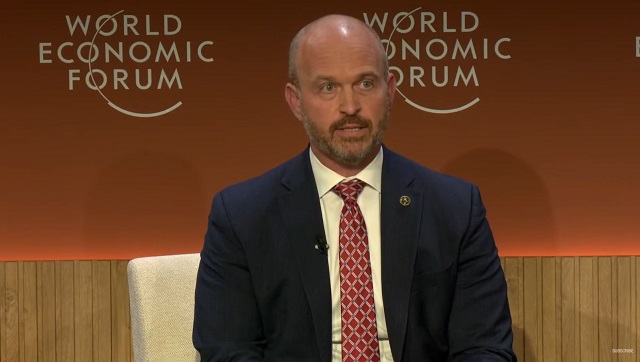
Heritage Foundation President Kevin Roberts at the World Economic Forum meeting in Davos
From LifeSiteNews
The Heritage Foundation’s Kevin Roberts said that everyone in the next administration must ‘compile a list of everything that’s ever been proposed at the World Economic Forum’ and object to ‘all of them, wholesale.’
The president of the conservative Heritage Foundation in said in his appearance at Davos that the next Republican administration needs to reject “everything that’s ever been proposed at the World Economic Forum.”
Kevin Roberts, head of the Heritage Foundation, the leading conservative think tank in the U.S., said during a panel discussion called “What to Expect from a Possible Republican Administration?” that “the kind of person who will come into the next conservative administration is going to be governed by one principle and that is destroying the grasp that political elites and unelected technocrats have over the average person.”
BREAKING – @Heritage President @KevinRobertsTX calls out globalist elites at WEF
He said the next Republican administration needs to “compile a list of everything that’s ever been proposed at the World Economic Forum and object [to] all of them, wholesale.” #WEF24 pic.twitter.com/DXmlZUoCOA
— Andreas Wailzer (@Andreas_Wailzer) January 18, 2024
“And if I may, I will be candid and say that the agenda that every single member of the administration needs to have is to compile a list of everything that’s ever been proposed at the World Economic Forum and object [to] all of them, wholesale.”
“Anyone not prepared to do that and take away this power of the unelected bureaucrats and give it back to the American people in unprepared to be part of the next conservative administration.”
Trump admin will ‘trust the science’ and reject push of gender ideology
Roberts said that the idea that the WEF is defending “liberal democracy” and the suggestion that Trump would be a “dictator” are both “laughable.”
My message to the self-appointed global elites: Your time is up. pic.twitter.com/Wj2Bntjztz
— Kevin Roberts (@KevinRobertsTX) January 18, 2024
“Whoever is the next conservative president is going to take on the power of the elites,” he declared.
“Political elites tell the average people on three or four or five issues, that the reality is X, when in fact reality is Y.”
Roberts went on to list five things as examples that President Trump will take on if he is elected:
“Take immigration: elites tell us that open borders and even illegal immigration are okay, the average person tells us in the United States that both rob them of the American way of life.”
“Elites also tell us that public safety isn’t a problem in American cities. Just travel to New York or Washington or Dallas, Texas. The average person will tell you that the lack of public safety damages not just the American way of life but their life.”
“Thirdly, I guess the favorite at the World Economic Forum, is climate change. Elites tell us that we have this existential crisis with so-called ‘climate change,’ so much so that climate alarmism is probably the greatest cause for [the] mental health crisis in the world. The solutions, the average person knows, based on climate change are far worse and more harmful and cost more human lives, especially in Europe during the time that you need heating, than to the problems themselves.”
“The fourth: China. The number one adversary not just to the United States but to free people on planet Earth. Not only do we at Davos not say that, we give the Chinese Communist Party a platform. Count on President Trump ending that nonsense.”
“And fifth, another supernational organization, the World Health Organization, is discussing foisting gender ideology upon [the] Global South. These are practices that are under review if not being rejected, by countries in Northern Europe.”,
“The new president, especially if it is President Trump, will, as you like to say, ‘trust the science.’ He will understand the basic biological reality of manhood and womanhood.”
“I think President Trump, if in fact he wins a second term, is going to be inspired by the wise words of Javier Milei, who said that he was in power not to guide sheep but to awaken lions,” Roberts concluded.
Roberts: ‘I’ll probably never be invited back’ to the WEF
In a video published on his X account shortly before his appearance in Davos, Roberts said that “for too long, the self-appointed globalist elites at the World Economic Forum in Davos Switzerland have lorded over you and me.”
This morning, I'll be joining #WEF24 to usher the Davoisie into early retirement. Tune in live at 10:15 a.m. EST.
🔗: https://t.co/VIJtdayL8b pic.twitter.com/Oozlr19HmW
— Kevin Roberts (@KevinRobertsTX) January 18, 2024
“And you’ll never guess, the president of the Heritage Foundation was invited this year to go, and against my preference, I’m going, on your behalf, to read those people the riot act.”
“Their time of lording over us has come to an end, whether it’s COVID lockdowns, riding over there in their beautiful fancy private jets while lecturing us at the same time, sometimes while on the plane, that climate change is an existential threat.”
“I’m going to talk about all of it. I’ll probably never be invited back, but considering I never wanted to go in the first place, I look forward to it.”
Business
Canada’s combative trade tactics are backfiring

This article supplied by Troy Media.
Defiant messaging may play well at home, but abroad it fuels mistrust, higher tariffs and a steady erosion of Canada’s agri-food exports
The real threat to Canadian exporters isn’t U.S. President Donald Trump’s tariffs, it’s Ottawa and Queen’s Park’s reckless diplomacy.
The latest tariff hike, whether triggered by Ontario’s anti-tariff ad campaign or not, is only a symptom. The deeper problem is Canada’s escalating loss of credibility at the trade table. Washington’s move to raise duties from 35 per cent to 45 per cent on nonCUSMA imports (goods not covered under the Canada-United States-Mexico Agreement, the successor to NAFTA) reflects a diplomatic climate that is quickly souring, with very real consequences for Canadian exporters.
Some analysts argue that a 10-point tariff increase is inconsequential. It is not. The issue isn’t just what is being tariffed; it is the tone of the relationship. Canada is increasingly seen as erratic and reactive, negotiating from emotion rather than strategy. That kind of reputation is dangerous when dealing with the U.S., which remains Canada’s most important trade partner by a wide margin.
Ontario Premier Doug Ford’s stand up to America messaging, complete with a nostalgic Ronald Reagan cameo, may have been rooted in genuine conviction. Many Canadians share his instinct to defend the country’s interests with bold language. But in diplomacy, tone often outweighs intent. What plays well domestically can sound defiant abroad, and the consequences are already being felt in boardrooms and warehouses across the country.
Ford’s public criticisms of companies such as Crown Royal, accused of abandoning Ontario, and Stellantis, which recently announced it will shift production of its Jeep Compass from Brampton to Illinois as part of a US$13 billion U.S. investment, may appeal to voters who like to see politicians get tough. But those theatrics reinforce the impression that Canada is hostile to
international investors. At a time when global capital can move freely, that perception is damaging. Collaboration, not confrontation, is what’s needed most to secure investment in Canada’s economy.
Such rhetoric fuels uncertainty on both sides of the border. The results are clear: higher tariffs, weaker investor confidence and American partners quietly pivoting away from Canadian suppliers.
Many Canadian food exporters are already losing U.S. accounts, not because of trade rules but because of eroding trust. Executives in the agri-food sector are beginning to wonder whether Canada can still be counted on as a reliable partner, and some have already shifted contracts southward.
Ford’s political campaigns may win applause locally, but Washington’s retaliatory measures do not distinguish between provinces. They hit all exporters, including Canada’s food manufacturers that rely heavily on the U.S. market, which purchases more than half of Canada’s agri-food exports. That means farmers, processors and transportation companies across the country are caught in the crossfire.
Those who believe the new 45 per cent rate will have little effect are mistaken. Some Canadian importers now face steeper duties than competitors in Vietnam, Laos or even Myanmar. And while tariffs matter, perception matters more. Right now, the optics for Canada’s agri-food sector are poor, and once confidence is lost, it is difficult to regain.
While many Canadians dismiss Trump as unpredictable, the deeper question is what happened to Canada’s once-cohesive Team Canada approach to trade. The agri-food industry depends on stability and predictability. Alienating our largest customer, representing 34 per cent of the global consumer market and millions of Canadian jobs tied to trade, is not just short-sighted, it’s economically reckless.
There is no trade war. What we are witnessing is an American recalibration of domestic fiscal policy with global consequences. Canada must adapt with prudence, not posturing.
The lesson is simple: reckless rhetoric is costing Canada far more than tariffs. It’s time to change course, especially at Queen’s Park.
Dr. Sylvain Charlebois is a Canadian professor and researcher in food distribution and policy. He is senior director of the Agri-Food Analytics Lab at Dalhousie University and co-host of The Food Professor Podcast. He is frequently cited in the media for his insights on food prices, agricultural trends, and the global food supply chain
Troy Media empowers Canadian community news outlets by providing independent, insightful analysis and commentary. Our mission is to support local media in helping Canadians stay informed and engaged by delivering reliable content that strengthens community connections and deepens understanding across the country
Business
Trans Mountain executive says it’s time to fix the system, expand access, and think like a nation builder
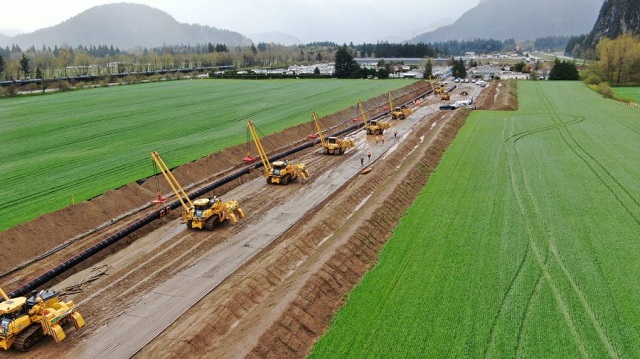
Mike Davies calls for ambition and reform to build a stronger Canada
A shift in ambition
A year after the Trans Mountain Expansion Project came into service, Mike Davies, President and Chief Operating Officer at Trans Mountain, told the B.C. Business Summit 2025 that the project’s success should mark the beginning of a new national mindset — one defined by ambition, reform, and nation building.
“It took fifteen years to get this version of the project built,” Davies said. “During that time, Canadian producers lost about $50 billion in value because they were selling into a discounted market. We have some of the world’s largest reserves of oil and gas, but we can only trade with one other country. That’s unusual.”
With the expansion now in operation, that imbalance is shifting. “The differential on Canadian oil has narrowed by about $13 billion,” he said. “That’s value that used to be extracted by the United States and now stays in Canada — supporting healthcare, reconciliation, and energy transformation. About $5 billion of that is in royalties and taxes. It’s meaningful for us as a society.”
Davies rejected the notion that Trans Mountain was a public subsidy. “The federal government lent its balance sheet so that nation-building infrastructure could get built,” he said. “In our first full year of operation, we’ll return more than $1.3 billion to the federal government, rising toward $2 billion annually as cleanup work wraps up.”
At the Westridge Marine Terminal, shipments have increased from one tanker a week to nearly one a day, with more than half heading to Asia. “California remains an important market,” Davies said, “but diversification is finally happening — and it’s vital to our long-term prosperity.”
Fixing the system to move forward
Davies said this moment of success should prompt a broader rethinking of how Canada approaches resource development. “We’re positioned to take advantage of this moment,” he said. “Public attitudes are shifting. Canadians increasingly recognize that our natural resource advantages are a strength, not a liability. The question now is whether governments can seize it — and whether we’ll see that reflected in policy.”
He called for “deep, long-term reform” to restore scalability and investment confidence. “Linear infrastructure like pipelines requires billions in at-risk capital before a single certificate is issued,” he said. “Canada has a process for everything — we’re a responsible country — but it doesn’t scale for nation-building projects.”
Regulatory reform, he added, must go hand in hand with advancing economic reconciliation. “The challenge of our generation is shifting Indigenous communities from dependence to participation,” he said. “That means real ownership, partnership, and revenue opportunities.”
Davies urged renewed cooperation between Alberta and British Columbia, calling for “interprovincial harmony” on West Coast access. “I’d like to see Alberta see B.C. as part of its constituency,” he said. “And I’d like to see B.C. recognize the need for access.”
He summarized the path forward in plain terms: “We need to stem the exit of capital, create an environment that attracts investment, simplify approvals to one major process, and move decisions from the courts to clear legislation. If we do that, we can finally move from being a market hostage to being a competitor — and a nation builder.”
-

 Alberta2 days ago
Alberta2 days agoFrom Underdog to Top Broodmare
-

 Business1 day ago
Business1 day agoTrans Mountain executive says it’s time to fix the system, expand access, and think like a nation builder
-
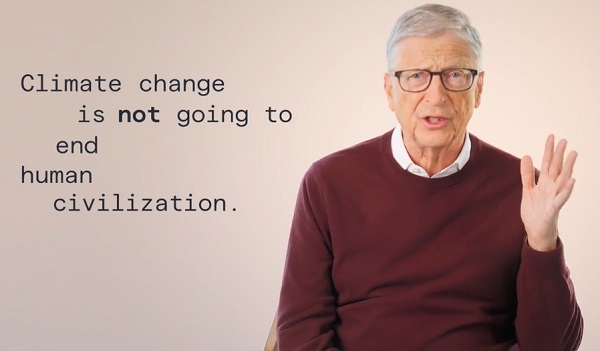
 Economy2 days ago
Economy2 days agoIn his own words: Stunning Climate Change pivot from Bill Gates. Poverty and disease should be top concern.
-
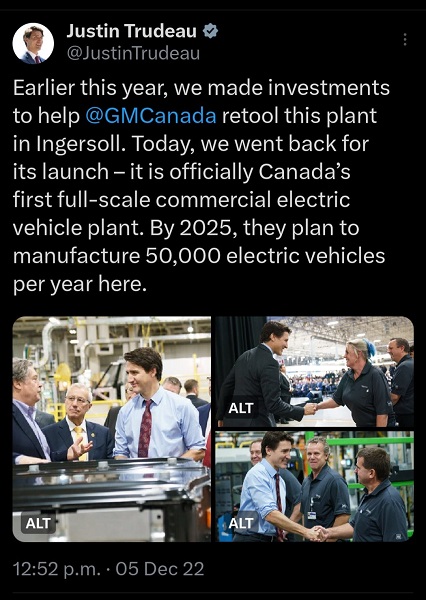
 Business2 days ago
Business2 days agoPaying for Trudeau’s EV Gamble: Ottawa Bought Jobs That Disappeared
-

 International1 day ago
International1 day agoBiden’s Autopen Orders declared “null and void”
-

 Addictions2 days ago
Addictions2 days agoThe Shaky Science Behind Harm Reduction and Pediatric Gender Medicine
-
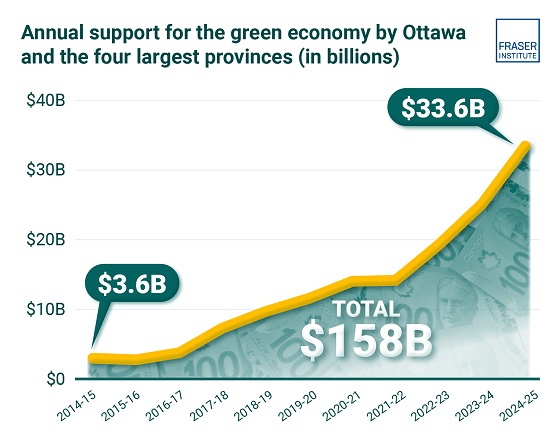
 Business2 days ago
Business2 days agoClean energy transition price tag over $150 billion and climbing, with very little to show for it
-
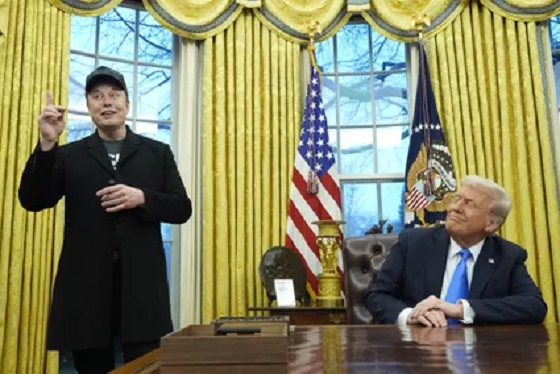
 Internet1 day ago
Internet1 day agoMusk launches Grokipedia to break Wikipedia’s information monopoly







